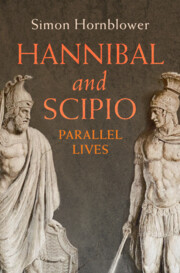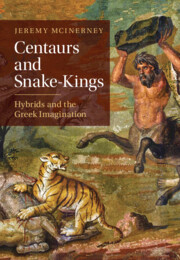Refine search
Actions for selected content:
23916 results in Ancient history
Appendix 8.4 - The Name of the Battle: Cicero in the Brutus, and Other Writers
- from Chapter 8 - The Tipping Point
-
- Book:
- Hannibal and Scipio
- Published online:
- 05 September 2024
- Print publication:
- 26 September 2024, pp 202-206
-
- Chapter
- Export citation
References
-
- Book:
- Hannibal and Scipio
- Published online:
- 05 September 2024
- Print publication:
- 26 September 2024, pp 436-465
-
- Chapter
- Export citation
Appendix 3.2 - How Many Maharbals?
- from Chapter 3 - Hannibal Victorious, 221–216
-
- Book:
- Hannibal and Scipio
- Published online:
- 05 September 2024
- Print publication:
- 26 September 2024, pp 111-112
-
- Chapter
- Export citation
Appendix 8.2 - The Metaurus Vow and Other Vows before or during Battles
- from Chapter 8 - The Tipping Point
-
- Book:
- Hannibal and Scipio
- Published online:
- 05 September 2024
- Print publication:
- 26 September 2024, pp 197-200
-
- Chapter
- Export citation
Chapter 5 - Hannibal Frustrated in Italy, 216–208
-
- Book:
- Hannibal and Scipio
- Published online:
- 05 September 2024
- Print publication:
- 26 September 2024, pp 137-154
-
- Chapter
- Export citation
Chapter 1 - Hannibal and Scipio on Themselves
-
- Book:
- Hannibal and Scipio
- Published online:
- 05 September 2024
- Print publication:
- 26 September 2024, pp 9-40
-
- Chapter
- Export citation
Notes for the Reader
-
- Book:
- Hannibal and Scipio
- Published online:
- 05 September 2024
- Print publication:
- 26 September 2024, pp xviii-xviii
-
- Chapter
- Export citation
Index
-
- Book:
- Hannibal and Scipio
- Published online:
- 05 September 2024
- Print publication:
- 26 September 2024, pp 466-502
-
- Chapter
- Export citation
Chapter 17 - Hannibal’s Years of Wandering, 190–183
-
- Book:
- Hannibal and Scipio
- Published online:
- 05 September 2024
- Print publication:
- 26 September 2024, pp 369-383
-
- Chapter
- Export citation
Abbreviations
-
- Book:
- Hannibal and Scipio
- Published online:
- 05 September 2024
- Print publication:
- 26 September 2024, pp xxiii-xxvi
-
- Chapter
- Export citation
Maps
-
- Book:
- Hannibal and Scipio
- Published online:
- 05 September 2024
- Print publication:
- 26 September 2024, pp xiv-xiv
-
- Chapter
- Export citation
Contents
-
- Book:
- Hannibal and Scipio
- Published online:
- 05 September 2024
- Print publication:
- 26 September 2024, pp ix-xiii
-
- Chapter
- Export citation
Chapter 3 - Hannibal Victorious, 221–216
-
- Book:
- Hannibal and Scipio
- Published online:
- 05 September 2024
- Print publication:
- 26 September 2024, pp 79-112
-
- Chapter
- Export citation
Copyright page
-
- Book:
- Hannibal and Scipio
- Published online:
- 05 September 2024
- Print publication:
- 26 September 2024, pp vi-vi
-
- Chapter
- Export citation
16 - Hannibal and Scipio: The Military Comparison
-
- Book:
- Hannibal and Scipio
- Published online:
- 05 September 2024
- Print publication:
- 26 September 2024, pp 337-368
-
- Chapter
- Export citation
Chapter 6 - Overseas Commands
-
- Book:
- Hannibal and Scipio
- Published online:
- 05 September 2024
- Print publication:
- 26 September 2024, pp 155-171
-
- Chapter
- Export citation
Prologue
-
- Book:
- Hannibal and Scipio
- Published online:
- 05 September 2024
- Print publication:
- 26 September 2024, pp 1-8
-
- Chapter
- Export citation
Timeline
-
- Book:
- Hannibal and Scipio
- Published online:
- 05 September 2024
- Print publication:
- 26 September 2024, pp xxi-xxii
-
- Chapter
- Export citation

Hannibal and Scipio
- Parallel Lives
-
- Published online:
- 05 September 2024
- Print publication:
- 26 September 2024

Centaurs and Snake-Kings
- Hybrids and the Greek Imagination
-
- Published online:
- 16 August 2024
- Print publication:
- 25 July 2024
